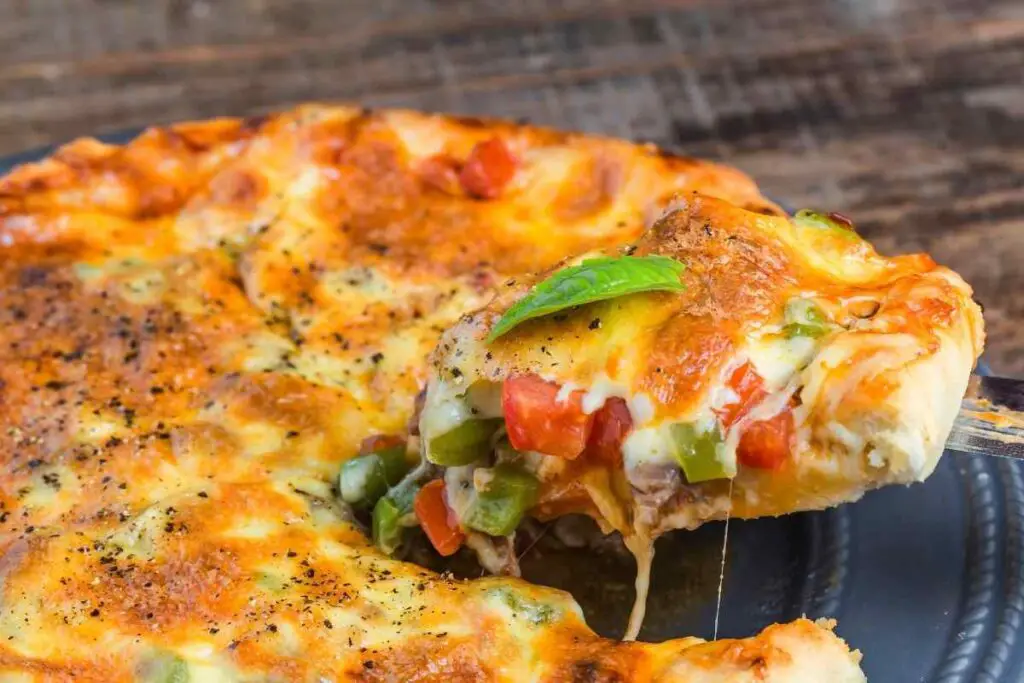Why Is My Ooni Pizza Dough So Sticky? (Let’s Find Out) 2022
Last updated on September 11th, 2023 at 02:13 pm
Making pizza in an OONI pizza oven can be an amazing experience. However, one secret to making a great pizza is making great dough.
Unfortunately, achieving this can be quite complicated and can sometimes be frustrating, especially when you’re new to pizza making.
There are procedures to follow in making pizza dough if you desire to achieve a great result.
But what happens when you follow all these procedures and measurements?
Then suddenly, you realize your pizza dough is sticky and difficult to work with.
You may wonder, “Why is my Ooni pizza dough so sticky?”
Sticky pizza dough is often experienced when the dough is over-hydrated. Too much water, oil, or any kind of liquid can cause over-hydration. Also, too little kneading, using cold water in rehydrating your yeast, and the humidity of the baking environment can all contribute to having a sticky dough.
Why Is My Ooni Pizza Soggy?
Your Ooni pizza can be soggy for many distinct reasons ranging from undercooking and using a watery sauce to insufficient oven heat.
Sogginess results from retaining moisture that ought to have been used up in the cooking process.

Soggy pizza is a real-time problem commonly encountered by starters new to pizza making. Soggy pizza is that part of the undercooked pizza that feels wet to the touch.
It is mostly referred to as the gum line in the pizza industry.
Let’s now discuss these reasons in a few detail.
#1. Use of Watery Sauce
When you use the wet sauce to make your Pizza, it only results in the steam that produces more moisture, making the base of your dough soggy.
It is commonly known that water and pizza don’t seem to go well. So, the too-watery sauce is something to watch out for to prevent a soggy dough.
However, if your desired sauce is watery, you can choose to either strain it or cook it a little to thicken the sauce by evaporating the excess water.
#2. Under-cooking
Taking the pizza off the oven too early can make your pizza soggy. There’s a specified time your pizza ought to stay in the oven.
When you take it off before this time, your pizza will be undercooked and become soggy.
One way of finding out if it is well cooked is by lifting your pizza base and checking the bottom.
If it looks white underneath, it is not ready, but when it looks golden brown at the bottom with a crust full of color, it is an indication your pizza is prepared, and you can remove it from the oven.
#3. Overtopping Your Pizza
Too much topping on your pizza can make your pizza dense, preventing the free flow of heat through the dough to the base of your pizza.
The reason is that the heavily topped part of the pizza will trap moisture, causing a soggy pizza.
#4. Insufficient Oven Heat
Pizza is prepared at high temperatures. Cooking pizza under too low a temperature only results in a soggy pizza.
And when you allow your pizza to stay for too long, it might dry out the crust of your pizza.
So ensure to cook your pizza at the correct temperature (about 450- 500F) and baking time.
Preheating the oven before inserting your pizza dough will also help to prevent sogginess, as your dough will start cooking the moment it gets into the Ooni.
#5. Pizza Base Too Thick
Making pizza dough with a thick base can result in an unevenly cooked pizza with some parts doughy and others soggy.
Pizza dough must not be too thick, and neither should it be too thin.
You should use a thin layer of dough and an evenly stretched pizza dough to prevent the sogginess of your pizza.
How Do You Keep the Pizza Dough From Sticking to the OONI?
Sticky pizza dough has a higher tendency to stick to the Ooni than a thicker dough will do.
So if you desire to keep your pizza dough from sticking to the Ooni, you must make more consistent pizza dough.
Having known that sticky pizza dough can stick easily to your Ooni, following these steps will help fix the stickiness of your pizza dough and prevent the dough from sticking to your Ooni.
First, sprinkle some flour slowly on the dough and knead. Adding flour to the dough helps reduce the liquid content in the dough.
While doing this, there is a need to ensure the flour is added little by little as too much of the flour in the dough may result in tough pizza dough, and the tough dough doesn’t make a good pizza.
The reason is that ideal pizza dough is made to be a bit sticky but not too sticky to get stuck to the Ooni.
Also, kneading the dough well enough can reduce the stickiness of the dough.
The sticky dough can also occur due to too little kneading of the dough. Your dough must form Gluten protein strands to ensure a smooth elastic dough.
The well-kneaded and stretchy dough is a key requirement in achieving a good pizza. How much you knead your dough also determines its texture, structure, and stability.
So kneading your pizza dough adequately is necessary to have a less sticky dough that won’t stick to your Ooni.
More so, in launching your pizza dough to the Ooni, you can decide to add some extra flour on your pizza peel so that when transferring the dough to the Ooni, there’ll still be some extra flour underneath the base of the dough.
Doing this will keep the dough from sticking to the Ooni.
Don’t forget that pre-heating the oven before launching the pizza dough keeps the dough from sticking to the Ooni.
The reason is that the heat from the Ooni tends to evaporate the dough’s moisture content, hence making it less sticky.
With less water in the dough, the chances of stickiness are drastically reduced.
How Do You Make the Bottom of Pizza Crispy In OONI?
An important requirement to achieve a crispy pizza is cooking it at a high temperature.
The high temperature helps to vaporize water while baking in an OONI. For a pizza to be crispy, the heat has to remove water or any form of liquid content.
Baking temperatures of about 370 – 480°C are best to get a crispy pizza.
Cooking your pizza at a lower temperature but for a longer time can also make your pizza crispy.
However, when the pizza stays too long in the OONI, it will dry out and possibly begin to crack.
However, adjusting the size of your dough contributes to the crispiness of your pizza. Thin pizza dough is sure to get crispy than thick ones.

You must further ensure to avoid too much sauce and toppings on your pizza because they add more moisture to the dough and take longer to crisp.
Light and water-free toppings and sauce will help achieve a crispier pizza.
Conclusion
There are many reasons why your OONI pizza dough comes out so sticky.
The common ones include too much liquid in the dough too little kneading, which prevents the formation of gluten protein strands needed for the dough’s consistency, and the humidity of the baking environment.
All these have to be adequately looked out for to prevent sticky dough.






